Others
- Anterior Cruciate Ligament (ACL) Tears
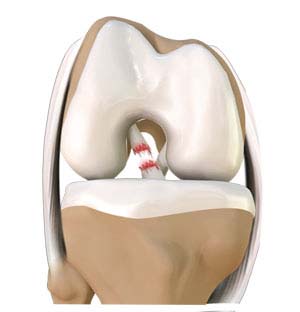
The anterior cruciate ligament (ACL) is one of the major ligaments of the knee. It is located in the middle of the knee and runs from the femur (thighbone) to the tibia (shinbone). The ACL prevents the tibia from sliding out in front of the femur.
Know More - Multiligament Instability

Multiligament instability occurs because of a direct blow to the knee, fall from a height or motor vehicle trauma. Multiple ligament knee injuries are common in athletes involved in contact sports such as soccer, football, and basketball.
Know More Launch Movie - Partial Meniscectomy

Partial meniscectomy is a surgical procedure to remove the torn portion of the meniscus from the knee joint.
Know More Launch Movie - Platelet Rich Plasma (PRP) Injection

PRP is a relatively new treatment method for several orthopaedic conditions such as muscle, ligament, and tendon injuries, arthritis and fractures. PRP injections can help alleviate painful symptoms, promote faster healing and delay joint replacement surgeries.
Know More Launch Movie - Normal Knee Anatomy

The knee is a complex joint made up of different structures - bones, tendons, ligaments, and muscles. They all work together to maintain the knee’s normal function and provide stability to the knee during movement.
Know More Launch Movie - Knee Pains
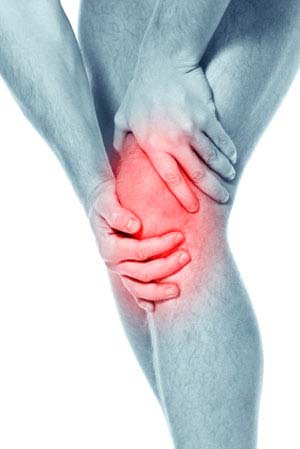
Knee pain is a common condition affecting individuals of different age groups. It not only affects movement but also impacts your quality of life.
Know More - Anterior Knee Pain
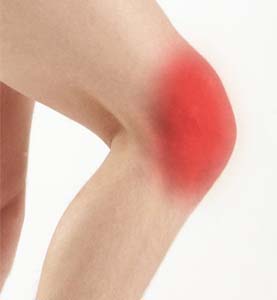
Anterior knee pain is characterized by chronic pain over the front and centre of the knee joint. It is common in athletes, active adolescents (especially girls) and overweight individuals.
Know More - Runner’s Knee

Patellofemoral pain syndrome also called runner’s knee refers to pain under and around your kneecap. Patellofemoral pain is associated with a number of medical conditions such as anterior knee pain syndrome, patellofemoral malalignment, and chondromalacia patella.
Know More - Osgood Schlatter

Osgood-Schlatter disease refers to an overuse injury that occurs in the knee of growing children and adolescents. This is caused by inflammation of the tendon located below the kneecap (patellar tendon).
Know More - Chondromalacia Patella
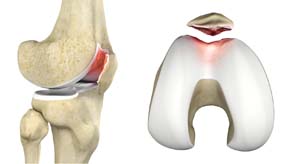
Chondromalacia patella is a common condition characterized by softening, weakening and damage of the cartilage. The condition is most often seen in young athletes and older adults who have arthritis of the knee. It especially occurs in women.
Know More - Jumper's Knee
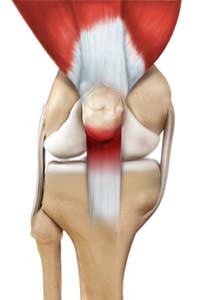
Jumper’s knee, also known as patellar tendinitis, is inflammation of the patellar tendon that connects your kneecap (patella) to your shinbone. This tendon helps in the extension of the lower leg.
Know More - Bursitis

Bursitis refers to the inflammation and swelling of the bursa. Inflammation of the bursa in front of the kneecap (patella) is known as kneecap bursitis or prepatellar bursitis.
Know More - Baker’s Cyst

A Baker’s cyst or popliteal cyst is a fluid-filled swelling that develops into a lump behind the knee. This causes stiffness, tightness, and pain behind your knee.
Know More - Iliotibial Band Syndrome
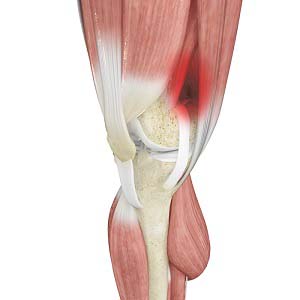
An iliotibial band is a tough group of fibers that runs from the iliac crest of the hip along the outside of the thigh, till the outer side of the shinbone, just below the knee joint. Its function is to coordinate with the thigh muscles and provide stability to the knee joint.
Know More - Lateral Patellar Compression Syndrome

Lateral patellar compression syndrome can result from poor alignment of the kneecap, complete or partial dislocation, overuse, tight or weak thigh muscles, flat feet and direct trauma to the knee.
Know More - Osteochondritis Dissecans
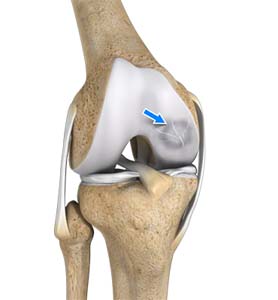
Osteochondritis dissecans is a joint condition in which a piece of cartilage, along with a thin layer of the bone separates from the end of the bone because of inadequate blood supply.
Know More - Shin Splints
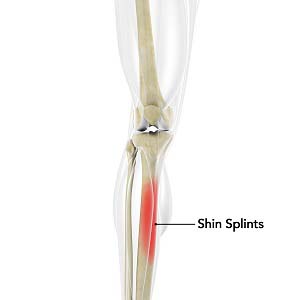
Shin splints are pain and inflammation of the tendons, muscles and bone tissue along the tibia or shinbone (lower leg).
Know More Launch Movie - Knee Sprain

Knee sprain is a common injury that occurs from overstretching of the ligaments that support the knee joint. A knee sprain occurs when the knee ligaments are twisted or turned beyond its normal range, causing the ligaments to tear.
Know More - Medial Collateral Ligament (MCL) Tears
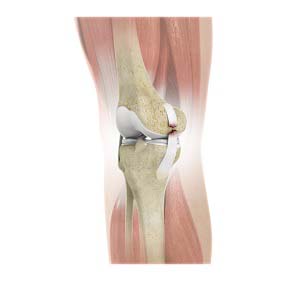
The medial collateral ligament (MCL) is the ligament located on the inner part of the knee joint. It runs from the femur (thighbone) to the top of the tibia (shinbone) and helps in stabilizing the knee.
Know More Launch Movie - MCL Sprains
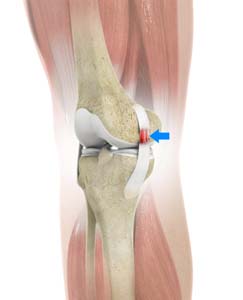
The medial collateral ligament (MCL), a band of tissue present on the inside of your knee joint, connects your thighbone and shinbone (bone of your lower leg). The MCL maintains the integrity of the knee joint and prevents it from bending inward.
Know More - Meniscal Injuries

Meniscal tears are among the commonest injuries to the knee joint. It can occur at any age but are more common in athletes involved in contact sports.
Know More - Meniscal Tears

A meniscal tear is a common knee injury in athletes, especially those involved in contact sports. A sudden bend or twist in your knee causes the meniscus to tear.
Know More Launch Movie - Ligament Injuries
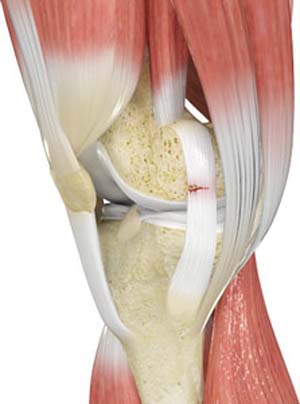
Knee problems may arise if any of these structures get injured by overuse or suddenly during sports activities. Pain, swelling, and stiffness are the common symptoms of any damage or injury to the knee.
Know More - Multi-ligament Injuries
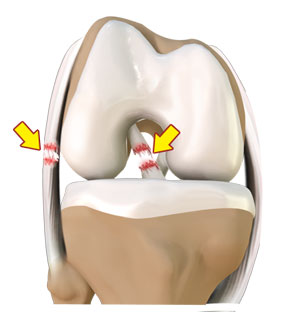
Injury to more than one knee ligament is called a multiligament knee injury and may occur during sports or other physical activities.
Know More - Patellar Dislocation

Patellar dislocation occurs when the patella moves out of the patellofemoral groove, (trochlea) onto the bony head of the femur.
Know More - Patellar Tendinitis
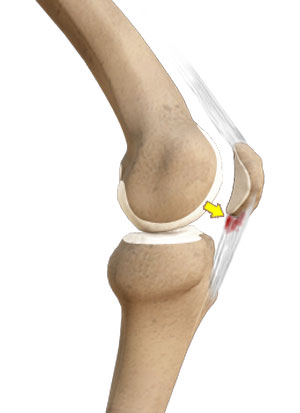
Patellar tendinitis, also known as "jumper's knee", is an inflammation of the patellar tendon that connects your kneecap (patella) to your shinbone. This tendon helps in extension of the lower leg.
Know More - Posterior Cruciate Ligament Injuries

Posterior cruciate ligament (PCL), one of the four major ligaments of the knee, is situated at the back of the knee. It connects the thighbone (femur) to the shinbone (tibia). The PCL limits the backward motion of the shinbone.
Know More Launch Movie - Chondral (Articular Cartilage) Defects
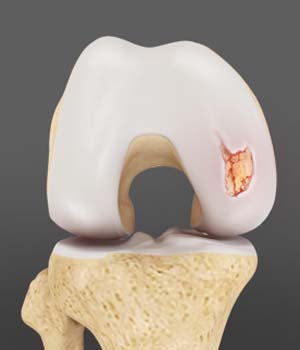
The articular or hyaline cartilage is the tissue lining the surface of the two bones in the knee joint.
Know More - Patellar Instability

Any damage to the supporting ligaments may cause the patella to slip out of the groove either partially (subluxation) or completely (dislocation).
Know More - Patellofemoral Instability Knee
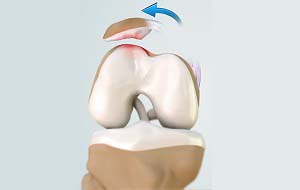
Patellofemoral instability means that the patella (kneecap) moves out of its normal pattern of alignment. This malalignment can damage the underlying soft structures such as muscles and ligaments that hold the knee in place.
Know More Launch Movie - Patella Fracture
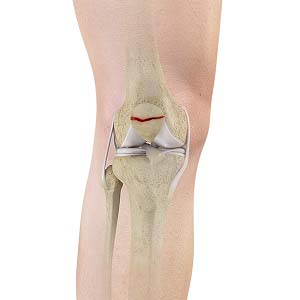
The kneecap or patella forms a part of the knee joint. It is present at the front of the knee, protecting the knee and providing attachment to various muscle groups of the thigh and leg.
Know More - Quadriceps Tendon Rupture
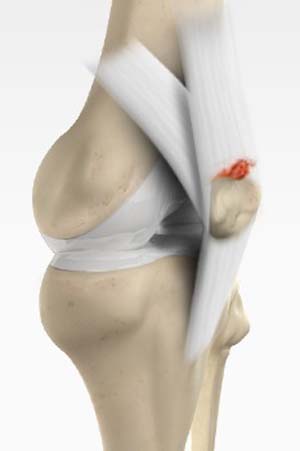
The quadriceps can rupture after a fall, direct blow to the leg and when you land on your leg awkwardly from a jump. Quadriceps tendon rupture most commonly occurs in middle-aged people who participate in sports that involve jumping and running.
Know More - Patella Tendon Rupture or Tear
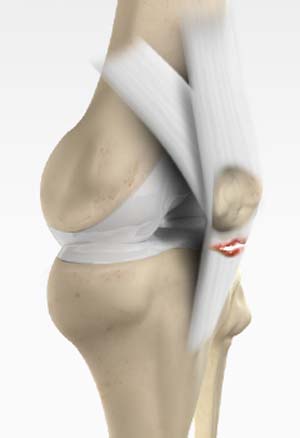
The patellar tendon works together with the quadriceps muscle and the quadriceps tendon to allow your knee to straighten out. Patella tendon rupture is the rupture of the tendon that connects the patella (kneecap) to the top portion of the tibia (shinbone).
Know More - Lateral Meniscus Syndrome

Lateral meniscus syndrome is characterized by an injury caused by the tearing of the cartilage tissue or a rare case of a congenital abnormality called a discoid meniscus, which results in knee pain.
Know More - Medial Meniscus Syndrome

Medial meniscal injuries are usually considered as either traumatic or degenerative.
Know More - Tibial Eminence Fracture

The tibia or shin bone is a major bone of the leg which connects the knee to the ankle. A fracture or break in the upper part of the tibia is known as a proximal tibial fracture and commonly occurs just below the knee joint.
Know More - Osteonecrosis of The Knee
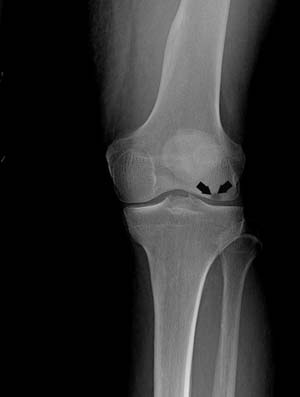
Osteonecrosis is a condition in which the death of a section of bone occurs because of lack of blood supply to it. It is one of the most common causes of knee pain in older women. Women over 60 years of age are commonly affected, three times more often than men.
Know More - Knee Angular Deformities (Knock Legs and Bow Legs)

Angular deformities of the knee are variations in the normal growth pattern during early childhood and are common during childhood.
Know More

